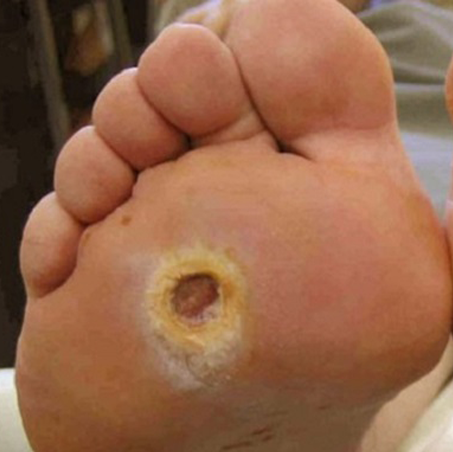Diabetic Foot Wounds


Join Our Mailing List to Learn More
A diabetic foot ulcer is an open sore or wound that occurs in approximately 15 percent of patients with diabetes and is commonly located on the bottom of the foot. Of those who develop a foot ulcer, 6 percent will be hospitalized due to infection or other ulcer-related complication.
Neuropathic ulcers, often caused by diabetes, are slow to heal—even more so as patients age, if they have longer-term diabetes, or if they’re smokers. Other factors that may stall healing include hypertension, hypercholesterolemia, and abnormal blood sugar levels, often associated with diabetes.
Diabetic ulcers typically occur below the ankle at any site of pressure, friction, shear, or trauma. The wound is likely to be round, with margins often characterized by a periwound callus. The presence of diabetes increases the risk for infection.
Diabetic foot wounds can lead to amputations and the implications are serious. Mortality following amputation ranges from 13 to 40% in 1 year, 35–65% in 3 years, and 39–80% in 5 years, being worse than most malignancies. Therefore, amputation-free survival is important in assessing the management of diabetic foot problems.
Diabetic Edge recently interviewed a potential amputee who has been able to save his foot. Join our mailing list now to hear his story and learn more.
